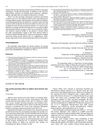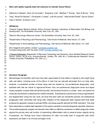Search
forLearn
5 / 14 resultslearn Osteopontin
signaling protein that, when suppressed, may grow hair by reducing inflammation and stem cell loss
learn Microneedling
technique to create small wounds in skin to activate collagen production and hair growth
learn Thymosin Beta 4
learn Beta Polypeptide
Research
5 / 1000+ results
research Tissue and Metabolic Regeneration in the Light of Stem Cells, Gut Microbiota, MicroRNAs, and Exosomes: A Systematic Review
A plant-based diet reduces skin inflammation, intermittent fasting supports muscle regeneration, and certain nutrients and supplements aid in healing.
research Quiescent Tissue Stem Cells Evade Immune Surveillance
Inactive stem cells in hair follicles and muscles can avoid detection by the immune system.

research Equine Adipose Tissue Derived Stem Cells and Their Multilineage Differentiation
Equine adipose stem cells can become different cell types and are promising for healing injuries.

research Hair Growth Promoting Effects of Adipose Tissue-Derived Stem Cells
Fat tissue stem cells may help increase hair growth.

research Stem Cells Tightly Regulate Dead Cell Clearance to Maintain Tissue Fitness
Stem cells help remove dead cells to keep tissues healthy by balancing cell replacement and clearance.
Community Join
5 / 881 resultscommunity Amplifica Sees Positive Results for Hair Loss Treatment - Results Show 15% increase in 60 days!
Amplifica's new injectable treatment for androgenetic alopecia shows a 15% increase in hair thickness and coarseness in 60 days. The treatment is in early human trials and offers a promising alternative to hormone-related hair loss treatments.
community Norwood 6 trying the bounce back
A 37-year-old who started losing hair in their early 20s tried minoxidil with little effect, then experienced more loss until 2023. They are now using a treatment including finasteride, minoxidil, biotin, saw palmetto shampoo, and micro needling, and are seeing early positive results.
community "Hair Follicle Stem Cells are quiescent 99% of the time and permanently reside in the hair follicle"
Hair follicles are mostly dormant but can be reactivated with treatments like minoxidil, finasteride, and microneedling. A new drug, PP405, shows promise for hair regrowth but may not be available until 2027-2028.
community How Does Exosome Therapy Work for Hair Loss?
Exosome hair therapy involves injecting stem cell-derived exosomes into the scalp to boost hair follicle regeneration and repair. Exosomes, which are not stem cells but products of them, contain bioactive chemicals and specific growth factors that promote new blood vessel formation, increase cell proliferation, reduce inflammation, and improve tissue repair, all crucial for hair health.
community New molecule PP405 vs exercise
PP405 targets hair follicle stem cells differently than exercise-induced lactate, suggesting exercise alone may not replicate its benefits. Minoxidil and finasteride are recommended alongside exercise for hair regrowth, with additional suggestions like spicy food and infrared exposure.